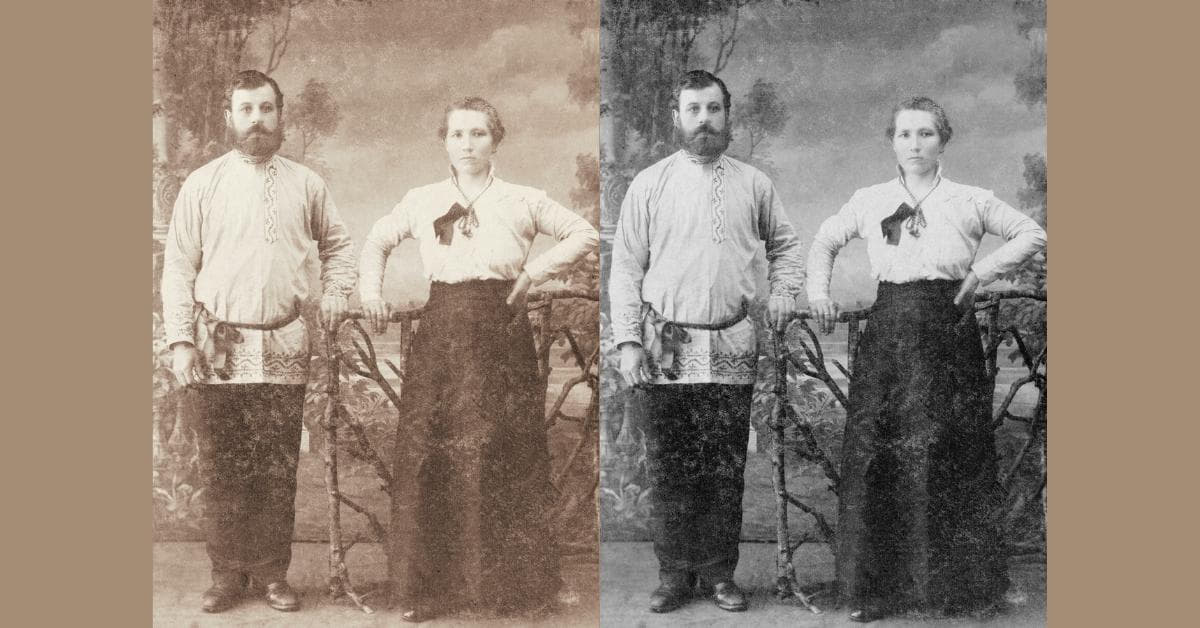In the age of digital photography, we often find ourselves cherishing old photographs for their nostalgic value. These vintage snapshots hold sentimental memories, but the ravages of time can leave them faded, damaged, and lacking the vibrancy they once had. Fortunately, with the power of Adobe Photoshop, you can breathe new life into these treasured memories. In this article, we’ll guide you through the photo editing process of turning old photos into vibrant, rejuvenated masterpieces in Photoshop, all while keeping your content authentic and fresh. So, let’s embark on a journey of transformation!
Restoring Old Photos in Photoshop
Explore the step by step process of transforming old photos to new photos in Photoshop.
Step 1: Scan or Digitize Your Old Photo
Before you begin, it’s crucial to have a high-quality digital version of your old photo. You can either scan it or use a high-resolution camera to capture it. Ensure that the image is well-lit and free from any reflections or glares.
Step 2: Open the Image in Photoshop
Once you have your digital copy, open it in Adobe Photoshop. If you don’t have Photoshop, you can get a subscription through Adobe Creative Cloud, which offers various pricing plans to suit your needs.
Step 3: Crop and Straighten
Use the Crop Tool to remove any unnecessary borders and straighten the image. This step will help improve the overall composition of your photo.
Step 4: Dust and Scratch Removal
Old photos often accumulate dust and scratches over time. To fix this, use the Healing Brush Tool or the Spot Healing Brush Tool. These tools allow you to paint over the imperfections, and Photoshop will intelligently replace them with surrounding pixels.
Step 5: Adjust Brightness and Contrast
Use the Levels or Curves adjustment layers to enhance the brightness and contrast of your photo. These adjustments will bring out the details and make your image pop.
Step 6: Color Correction
To restore the color in faded photos, use the Hue/Saturation adjustment layer. Tweak the sliders until the colors look natural and vibrant. Be careful not to overdo it; subtlety is key.
Step 7: Repair Tears and Creases
For photos with tears or creases, the Clone Stamp Tool and the Patch Tool can be your best friends. Carefully clone or patch over these imperfections to make the image look seamless.
Step 8: Sharpen Your Image
To sharpen the details in your photo, apply the Unsharp Mask filter. Adjust the settings to your liking but remember not to go overboard, as excessive sharpening can introduce noise.
Step 9: Add Finishing Touches
You can add a vignette, borders, or any other creative touches to enhance the overall look and feel of your photo.
Step 10: Save and Share
Finally, save your newly restored photo in a high-resolution format. You can now proudly display your rejuvenated masterpiece and share it with friends and family.
Frequently Asked Questions (FAQs)
1. Can I restore any old photo with Photoshop?
Yes, Photoshop is a powerful tool that can restore most old photos. However, the success of your restoration depends on the extent of damage and the quality of the source image. Severely damaged or extremely low-resolution photos may be more challenging to restore.
2. Do I need to be a Photoshop expert to restore old photos?
No, you don’t need to be an expert, but some basic knowledge of Photoshop will be helpful. There are numerous online tutorials and courses available that can guide you through the process.
3. What if I don’t have Photoshop? Are there alternative software options?
Yes, there are alternative photo editing software options like GIMP (GNU Image Manipulation Program) and online tools like Pixlr and Canva that offer basic photo restoration features.
4. Is it possible to colorize black and white photos using Photoshop?
Yes, you can colorize black and white photos in Photoshop using various techniques and tools. It can be a time-consuming process, but the results can be stunning.
5. Can I restore my old photos without a scanner?
While a scanner is ideal for capturing high-resolution images, you can use a high-quality digital camera to capture your old photos if a scanner is not available. Just ensure proper lighting and minimal glare.
6. What should I do if my old photo is torn or has missing parts?
Photos with tears or missing parts can be challenging to restore, but Photoshop’s Clone Stamp Tool and the Patch Tool can help recreate missing details. It may not be perfect, but it can significantly improve the photo’s appearance.
Conclusion
Restoring old photos in Photoshop is a rewarding journey that allows you to relive precious memories and share them with future generations. With the right tools and techniques, you can breathe new life into even the most damaged and faded photographs. Remember to take your time, experiment, and don’t be afraid to seek help from online resources or experts. Your newly transformed photos will undoubtedly become cherished family heirlooms.
This page was last edited on 20 February 2024, at 3:01 pm
